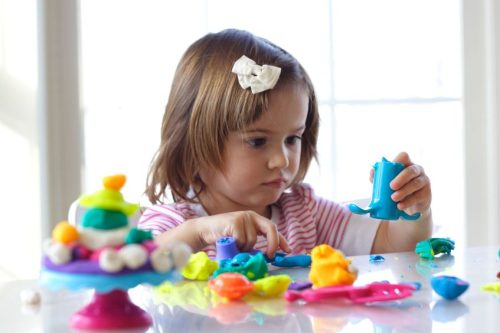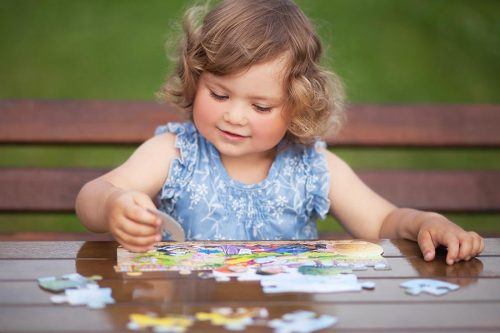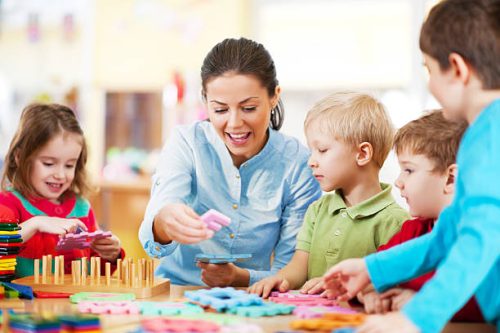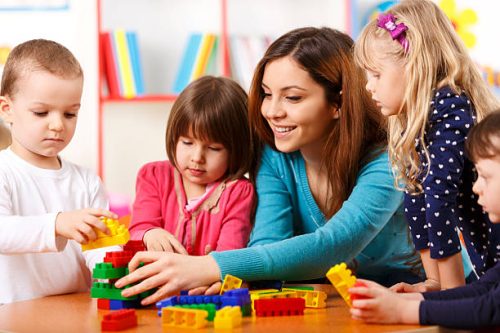Eye-hand coordination is the ability to use our vision to guide the movement of our hands. In children, this skill plays a vital role in overall development, as it supports fine motor skills, cognitive processing, and physical control. Whether it’s writing, buttoning a shirt, or using classroom tools, eye-hand coordination allows children to perform tasks that require accuracy and timing.
Strong coordination between the eyes and hands contributes to academic success, independence in daily tasks, and improved confidence. If a child struggles in this area, it may affect their performance in school and other routine activities. Supporting this development early helps build the foundation for more complex learning and motor skills as they grow.
What is Hand-Eye Coordination?
Hand-eye coordination is the ability to process visual input and use that information to guide hand movements. This synchronization is required in almost every daily activity — from eating with a spoon to playing video games.
Children begin developing this skill in infancy. By 6 months, babies start reaching for objects they see. By toddlerhood, they attempt stacking blocks or scribbling with crayons. As they grow, they engage in more refined eye hand coordination and fine motor activities like writing, buttoning shirts, or using scissors.
Signs a child may struggle with hand-eye coordination include:
- Difficulty copying shapes or letters
- Trouble catching or hitting a ball
- Challenges with tying shoelaces or using utensils
- Avoiding tasks that require precision or balance

The Role of Vision in Hand-Eye Coordination
Vision isn’t just about seeing clearly — it’s about interpreting what the eyes perceive and directing the body’s response. The brain needs accurate visual signals to coordinate motor movements correctly.
Children with poor visual tracking, depth perception, or focusing skills often face challenges in hand and eye coordination activities. For example, if a child can’t track a moving object, catching a ball becomes frustrating. Or if they misjudge distances, stacking blocks becomes harder.
How vision affects coordination:
- Depth perception helps judge how far an object is.
- Visual tracking allows eyes to follow moving objects smoothly.
- Eye teaming enables both eyes to work together for accurate visual input.
Addressing visual issues early can drastically improve a child’s coordination, confidence, and learning abilities.
The Role of Eye Care in Improving Hand-Eye Coordination
Routine eye exams are crucial — especially during the early years. Vision-related issues might not always be obvious. A child may appear clumsy or avoid drawing, but the root cause could be blurred vision or eye alignment problems.
At Nurturers, we recommend regular eye checkups, particularly for children showing developmental delays. An early hand eye coordination test can help identify whether the difficulty is rooted in motor control, visual perception, or both.
Key tips for eye care to improve hand-eye coordination:
- Ensure your child has proper lighting during activities.
- Limit screen time to avoid digital eye strain.
- Encourage outdoor play to strengthen visual tracking.
- Use age-appropriate tools like large print books or wide grip crayons.

Top Hand-Eye Coordination Activities in Children
Improving hand-eye coordination doesn’t require expensive tools or equipment. Simple, everyday activities can make a huge difference. The goal is to help children align their visual focus with precise hand movement.
1. Ball Games
Games like catch, throw-and-catch with a balloon, bouncing a basketball, or using a paddle and ball are excellent eye hand coordination activities. These help improve timing, accuracy, and response speed.
2. Puzzles and Shape Sorters
Whether it’s jigsaw puzzles or shape boards, these activities require visual discrimination and precise hand control to place pieces correctly — perfect eye hand coordination fine motor activities for toddlers and preschoolers.
3. Threading and Lacing
Threading beads or lacing cards help refine small finger movements while improving focus and control.
4. Coloring Inside the Lines
Coloring is more than just a fun pastime. It improves hand control, attention span, and visual-motor integration. Encourage your child to stay within lines or trace shapes.
5. Using Tweezers or Tongs
Games like picking up objects using tweezers or tongs improve grip strength, precision, and control — foundational for writing and tool use.
6. Building with Lego or Blocks
Building promotes spatial awareness, sequencing, and bilateral coordination (using both hands). It’s also great for creativity.
7. Crafts Involving Cutting, Gluing, Folding
Let children cut paper shapes, fold origami, or use glue sticks to create collages. These hand and eye coordination activities involve step-by-step processing and fine control.
8. Balance Activities
Balancing on a beam or hopping across floor markers improves whole-body coordination, especially when combined with visual cues.
9. Interactive Learning Apps and AR Games
Some digital tools (used moderately) provide hand-eye coordination challenges that encourage visual-motor response under timed conditions.

Which Therapy Helps for Hand-Eye Coordination?
If a child consistently struggles with coordination, therapeutic intervention may help. Here are the most effective therapy options:
Occupational Therapy (OT)
Occupational Therapy focuses on improving fine and gross motor skills through purposeful eye hand coordination activities. Therapists use tailored games, tools, and exercises to improve visual-motor integration.
Vision Therapy
If coordination issues stem from a visual processing disorder, vision therapy can retrain the eyes and brain to work together. Vision Activities include tracking exercises, convergence training, and peripheral awareness games.
Sensory Integration Therapy
This helps children who have trouble processing sensory information — like movement, balance, or touch — which can interfere with hand and eye coordination activities.
At Nurturers, our specialists combine multiple therapy techniques depending on your child’s unique needs, supported by continuous assessment like hand eye coordination tests.

Why Hand-Eye Coordination Matters for Life
Strong hand-eye coordination lays the foundation for success in multiple areas of life:
- Academics: Writing, drawing, and reading require precise visual-motor skills.
- Sports: Catching, aiming, and reacting depend on fast and accurate coordination.
- Life Skills: Tasks like brushing teeth, getting dressed, or eating independently rely on motor control.
- Career Skills: As children grow, professions such as surgery, mechanics, designing, or engineering depend heavily on precise coordination.
Poor development of these skills can affect a child’s confidence and independence. By learning how to improve hand eye coordination early, children are more likely to thrive in school and beyond.
Conclusion
Developing strong hand-eye coordination in children isn’t just about physical growth — it’s about empowering them to explore, learn, and succeed confidently. Whether it’s through daily eye hand coordination, fine motor activities or guided therapy, every effort you make supports their cognitive and physical development.
If you’re unsure where your child stands, consider a professional hand eye coordination test and consult with our experts at Nurturers. Together, we can nurture their skills and support their journey toward independence and success.

